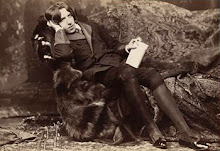 "All at once the wolves began to howl as though the moonlight had hadsome peculiar effect on them. The horses jumped about and reared, andlooked helplessly round with eyes that rolled in a way painful tosee. But the living ring of terror encompassed them on every side,and they had perforce to remain within it. I called to the coachmanto come [...]How he camethere, I know not, but I heard his voice raised in a tone of imperious command, and looking towards the sound, saw him stand in the roadway.As he swept his long arms, as though brushing aside some impalpable obstacle, the wolves fell back and back further still. Just then aheavy cloud passed across the face of the moon, so that we were again in darkness." Dracula, chapter 11
"All at once the wolves began to howl as though the moonlight had hadsome peculiar effect on them. The horses jumped about and reared, andlooked helplessly round with eyes that rolled in a way painful tosee. But the living ring of terror encompassed them on every side,and they had perforce to remain within it. I called to the coachmanto come [...]How he camethere, I know not, but I heard his voice raised in a tone of imperious command, and looking towards the sound, saw him stand in the roadway.As he swept his long arms, as though brushing aside some impalpable obstacle, the wolves fell back and back further still. Just then aheavy cloud passed across the face of the moon, so that we were again in darkness." Dracula, chapter 11 [1] June 29th: Saint Peter of the summer (The celebration of wolves) - Saints Peter and Pavel stay on the moon, one on the right and the other on the left side. St. Peter is the keeper of the keys from the Heaven gate and rooms. He is also God’s right hand. Peter is the one who commands the hail and he is the patron of the farmers.Saints Peter and Pavel celebration lasts for three days. A legend goes that once upon a time, while the saints walked on the earth, they entered a pub. A lot of people partied in there and they convinced the saints join them. After they had danced and partied, the two saints realized they didn’t like it and they decided to punish the people for having attracted them in their party. So the saints decided that people should fast on their day.The glow-worms appear on St. Peter’s day. These are the sparks fallen on the earth after the saint whips. St. Peters send the glow-worms in order to guide the one who are lost in the woods.The dead ones are remembered on this day, which is also celebrated for keeping the wolves away from the cattle
.29 iunie: San-Petru de Vara (Sarbatoarea lupilor) - Sfintii Petru si Pavel stau pe luna, de-o parte si de alta a acesteia. Sf. Petru este detinatorul cheilor de la poarta si de la incaperile Raiului, dar si mana dreapta a lui Dumnezeu. Petru este cel care stapaneste piatra, grindina si este patronul agricultorilor.Sarbatoarea sfintilor Petru si Pavel se tine timp de trei zile.O legenda spune ca odata, in timp ce sfintii se aflau pe pamant, au intrat intr-o carciuma. Au gasit acolo o multime de oameni in mijlocul unei petreceri si s-au alaturat si ei jocului. Dupa ce au obosit, si-au dat seama ca nu le-a placut si, pentru a-i pedepsi pe oamenii care i-au facut sa petreaca, au hotarat ca de ziua lor sa se posteasca.La Sanpetru de vara apar licuricii. Acestia sunt de fapt scanteile cazute pe pamant dupa ce sfantul plesneste din biciul sau. Sf. Petru trimite licuricii pentru a-i indruma pe cei pierduti in padure.In aceasta zi se fac pomeni pentru cei morti (Mosii de Sanpetru).Oamenii respecta ziua Sf. Petru si pentru a tine lupii departe de animale.
Anka's and Alexandra's work.
Θαυμάσιες ρουμανικές λαογραφικές διηγήσεις για την Ημέρα των Αγίων Πέτρου και Παύλου.
Πιστεύεται ότι οι Άγιοι κάθονται στο φεγγάρι, δεξιά και αριστερά. Ο Πέτρος έχει και τα κλειδιά του Παραδείσου. Από το χτύπημα του μαστιγίου του βγαίνουν πυγολαμπίδες για να βλέπει ο κόσμος μέσα στο δάσος τη νύχτα. Η νηστεία της ημέρας ανάγεται στην εποχή που οι Άγιοι περπατούσαν ανάμεσα στους ανθρώπους, και μπήκαν σε ένα καπηλειό, όπου προσκλήθηκαν να γλεντήσουν. Οι ακρότητες όμως των θαμώπων τους δυσαρέστησαν και έκτοτε επέβαλαν νηστεία κάθε τέτοια μέρα. Οι εορτασμοί στη Ρουμανία κρατάνε τρεις μέρες. Επίσης είναι μέρα μνήμης των νεκρών, όπου θεωρείται ότι οι λύκοι κρατιούνται μακριά από τα κοπάδια.
Ο Κόμης ορίζει τα νυχτόβια ζώα με την ίδια ευκολία που διαφεντεύει τα στοιχεία της φύσεως. Ένας ήμερος λύκος του ζωολογικού κήπου, γίνεται όργανό του για να εισβάλει στο σπίτι της Λούσυ και να την δαγκώσει.
The Count reigns upon the animals of the night as well as nature's forces. See how tame the wolf he used to enter Lucy's bedroom really is:
"That 'ere wolf what we called Bersicker was one of three grayones that came fro m Norway to Jamrach's, which we boughtoff him four years ago. He was a nice well-behaved wolf,that never gave no trouble to talk of. I'm more surprisedat 'im for wantin' to get out nor any other animile in the place. But, there, you can't trust wolves no more nor women."
m Norway to Jamrach's, which we boughtoff him four years ago. He was a nice well-behaved wolf,that never gave no trouble to talk of. I'm more surprisedat 'im for wantin' to get out nor any other animile in the place. But, there, you can't trust wolves no more nor women."
Αξίζει να σημειωθεί ότι πριν "καταληφθεί" από το πνεύμα του κακού, ο μεγάλος λύκος του ζωολογικού κήπου είχε χαρακτηριστεί από τον φύλακα "ένα ζώο ήρεμο που δε δημιουργούσε προβλήματα". Αυτό σε ένα κείμενο του 1897, πολύ πριν απενοχοποιηθεί ο κακός λύκος των παραμυθιών. Η σκηνή που επιτίθεται στη μάνα και κόρη αποτελεί μακρινό απόηχο των γερμανικών λαογραφικών παραδόσεων (βλ. Κοκκινοσκουφίτσα)

























No comments:
Post a Comment